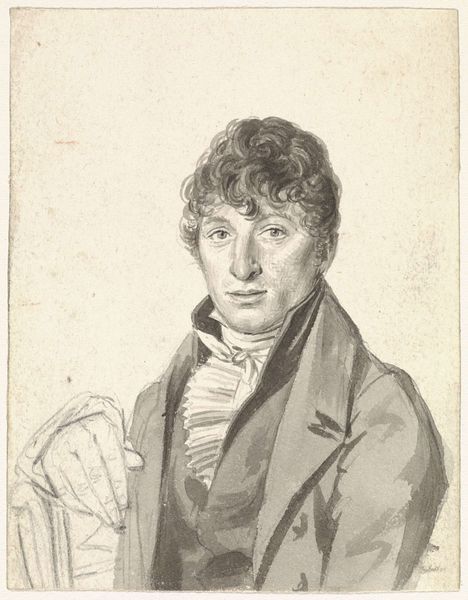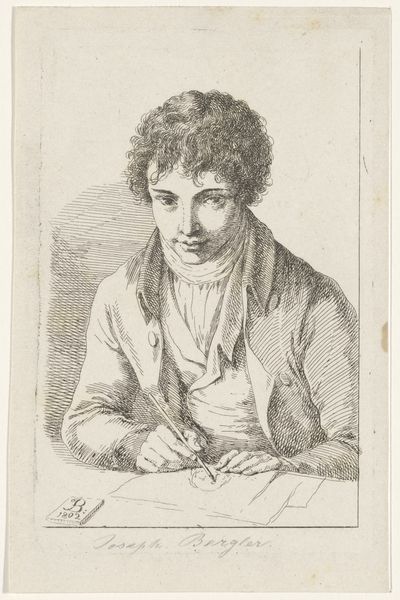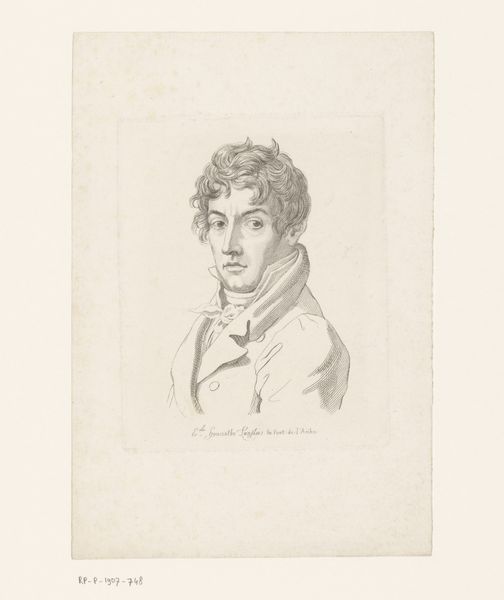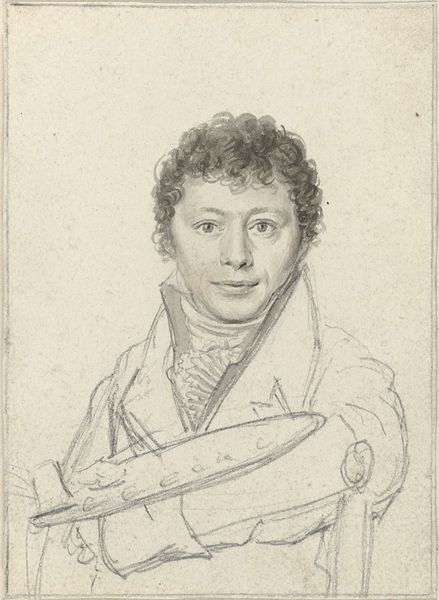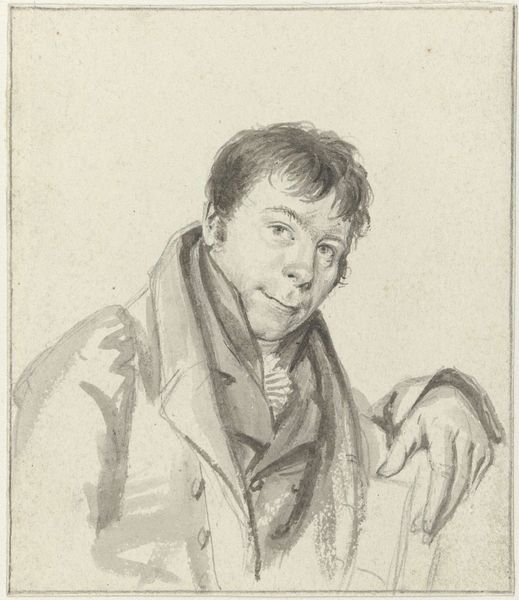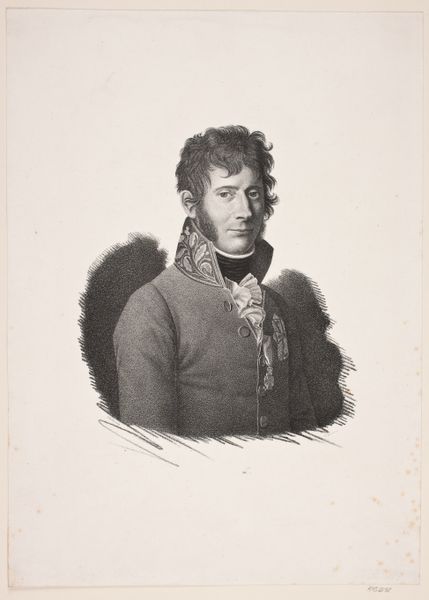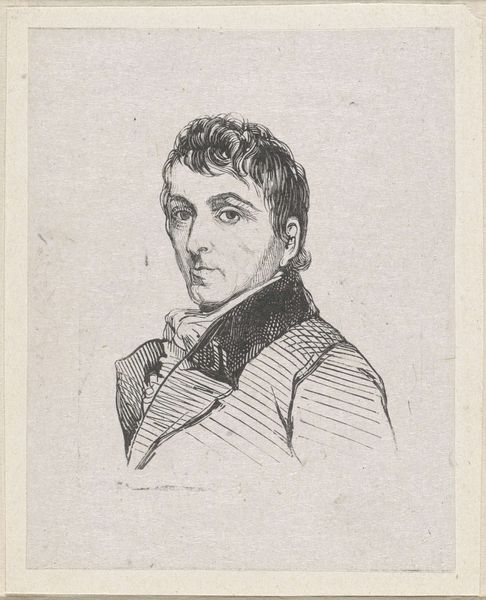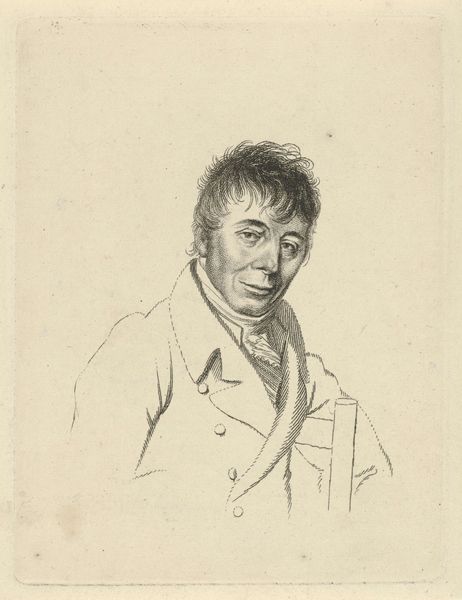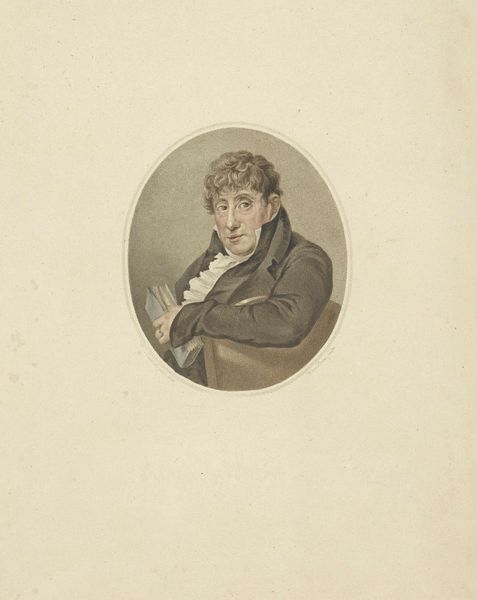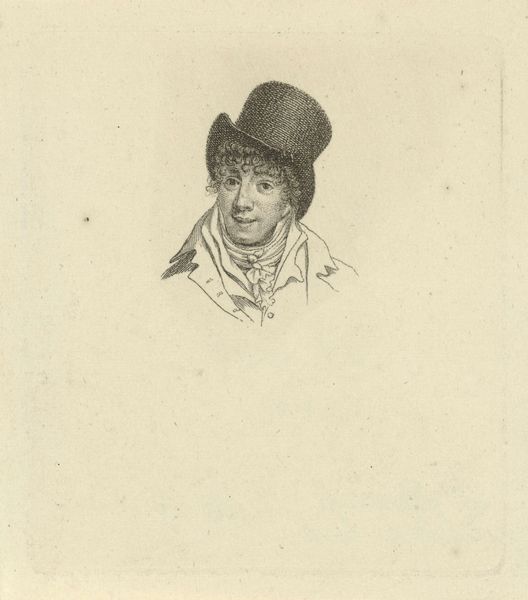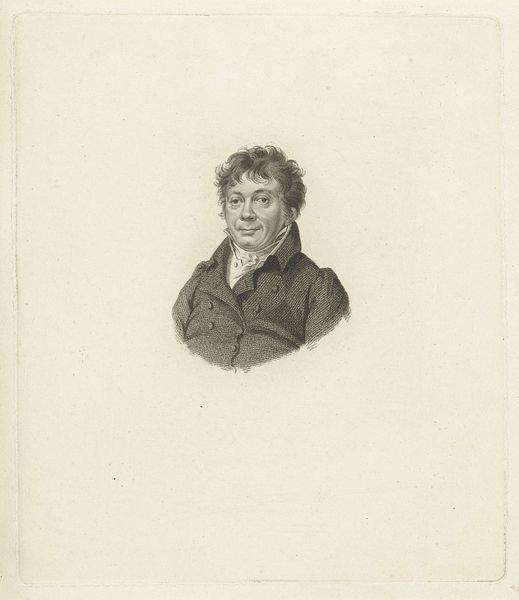
drawing, pen
#
portrait
#
drawing
#
neoclacissism
#
pencil drawing
#
line
#
pen
#
portrait drawing
Dimensions: height 130 mm, width 110 mm
Copyright: Rijks Museum: Open Domain
Curator: Welcome. Before us hangs Jacob Ernst Marcus’s “Portret van Albertus Jonas Brandt,” created in 1816. It is a meticulous drawing executed in pen and pencil, currently held here at the Rijksmuseum. Editor: My first impression? Restraint. There's a certain composed severity about the sitter, enhanced by the monochromatic palette and tightly controlled lines. I wonder about the social context. Curator: The artist really employed a remarkable cross-hatching technique, wouldn't you agree? Note the subtle gradations of tone, particularly in the rendering of the coat and the sitter's hair. A fine example of Neoclassical line work. Editor: Certainly. The cross-hatching contributes to the feeling of texture. And his youth comes through the image so powerfully! This begs the question, who was Albertus Jonas Brandt, and what were the social expectations placed upon young men of his era? He looks somewhat… trapped? Curator: Biographical details on Brandt himself are scant. However, Marcus, a Dutch Jewish artist working during a period of burgeoning nationalism, perhaps consciously embraced the clear lines and idealized forms of Neoclassicism as a way to assert a sense of order and rationality. Editor: Perhaps, but consider how Neoclassicism was also used to uphold societal hierarchies. Was this controlled presentation also reflective of pressures exerted on Jewish artists of the time to assimilate or conform to specific ideals? Curator: An intriguing consideration, and it cannot be denied that this is more than a simple representation; it offers itself as a symbol. Note that the focus is intensely on Brandt’s face and hands, giving a unique balance and scale. Editor: Exactly! Scale is something I wanted to draw attention to as well. The subtle upward lift of the head combined with how tightly his fingers are interlaced hint at vulnerability… yet, in the eyes we see… strength? Perhaps it suggests his ability to endure. Curator: A nuanced read that moves past formal qualities to contextual nuance. Editor: And on the contrary, maybe formal construction cannot always give us historical truth, Jacob Marcus’ intent may not have included any consideration towards the way the portrait reads against current theory! What the artist wants can be different from what the art says, always. Curator: Always such a lively conversation with you! Let’s turn to the next piece.
Comments
No comments
Be the first to comment and join the conversation on the ultimate creative platform.

